Topkapi Palace Museum
Topkapi Palace Video Introduction
Topkapi Palace (Directions) : Fresh from his conquest of Constantinople, Mehmet II built Topkapi Sarayi as his main residence in 1459–65. He planned it as a series of pavilions in four courtyards – a tribute in stone to the tent encampments of his nomadic forebears. Mehmet’s palace was also the seat of government, and contained a college for training officials and soldiers. While government moved across the road to the Sublime Porte in the 16th century, Topkapı continued as the sultan’s palace until Abdül Mecit I moved to Dolmabahçe Palace in 1853.
Main Sections (Map)
Click on highlighted fields to learn more
[drawattention ID=”13456″]
- Imperial Gate (Bâb-ı Hümayun): Built in 1478, this gate is the main entrance to the palace, with gatekeepers’ quarters on either side. An apartment belonging to Mehmet II above the gate was destroyed by fire in 1866.
- First Courtyard (Alay Meydanı): This vast outer courtyard takes in all of Gülhane Park, sweeping down the hill to Sirkeci and including the 6th-century church of Haghia Eirene (Aya İrini Kilisesi), the wooden houses of Soğukçeşme Sokağı and the imposing Archaeological Museum.
- Harem: A maze of rooms and corridors, the Harem was a closed world occupied by the sultan’s wives, concubines and children. A guided tour is a must.
- Gate of Salutations (Bâb-üs Selâm) : At this elaborate gate (left), built in 1524, visitors were greeted, and high officials who had upset the sultan were arrested and strangled. The gateway leads into the Second Courtyard (Divan Meydanı), where the Treasury now has a magnificent display of arms and armor. Read more about Ottoman mehter music
- Kitchens: These huge kitchens once catered for 5,000 people a day. Now they display a marvelous collection of ceramics, crystal and silver, including the Chinese celadon ware favored by early sultans because, supposedly, it changed color when it came into contact with poison.
- Throne Room (Arz Odası): In the Throne Room (right), the Sultan would consult his ministers and governors, welcome ambassadors and other dignitaries, and host smaller formal state occasions.
- Third Courtyard (Enderûn Meydanı): The Gate of Felicity (Bâb-üs Saadet) leads to the Third Courtyard, containing the sultan’s private quarters and those of the Harem’s white eunuchs.
- Imperial Wardrobe (Seferli Koğuşu): Fittingly, the Imperial Wardrobe is now the home of the costume museum, a sumptuous collection of some 3,000 elaborately embroidered royal robes (above).
- Treasury (Hazine Koğuşu): With exhibits including the jewel-encrusted Topkapı Dagger (below) and the amazing 86-carat Spoonmaker’s Diamond, the Topkapı Treasury may be the most ostentatious collection of wealth ever gathered outside of the legendary Aladdin’s cave.
- Imperial Sofa (Sofa-ı-Hümayun): The Imperial Sofa was a place to relax, its gardens studded with pavilions built by successive sultans. The finest is the Baghdad Pavilion (Bağdat Köşkü), built by Murat IV in 1639 to celebrate his capture of the city of Baghdad the year before.
Special Attention
The Palace Kitchen
On the right, you will see the Palace Kitchens. The architect Sinan decorated the kitchens after a big fire and the kitchen was not enough due to the increase in population. It was served to 10,000 to 15,000 people in some days. This is such a big number. The palace kitchen contains a total of 10,700 Chinese pieces ranging from 13th to 20th centuries. These were either purchased or received as gifts. In the collection, up to 730 Japanese porcelains can be found ranging from 17th to 19th centuries. Celadon from China is an important item in the kitchen because there was a belief that if the food was poisoned to assassinate the Sultan, the porcelain would change the color. Moreover, there are a lot of great silver products you can see in the kitchens.The palace kitchen is also long and has different sections as follows.
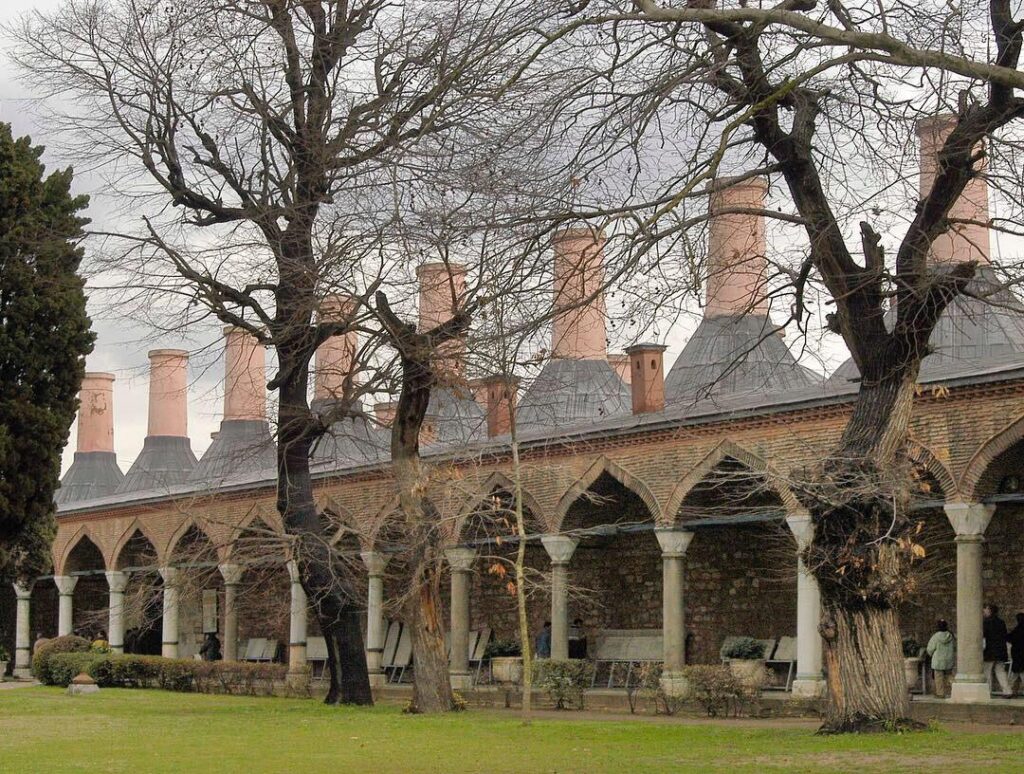
- Imperial pantry: The pantry was the storage location of foods consumed at the palace. Moreover, there was an outer pantry for registration of foods before carrying the imperial pantry. So, you can see steelyards, storage vessels, sherbet jars in this pantry. There is also a Turkish bath.
- Halvahane: This section is dedicated to sweety products. Of course, the most important one is “Sugar Candy”.
- Mosque: There was a dedicated mosque for the cooks.
- Palace Kitchen Staff Halls: The dormitory was constructed in the 16th and 17th centuries.
Treasury
- The Arm of St. John the Baptist : According to some resources, the arm of St. John the Baptist’s which is currently located in the palace were in Constantinople and moved to Rhodes and has been found in Cyprus before moving back to Istanbul. The bone is in the gold-embellished silver artificial arm.
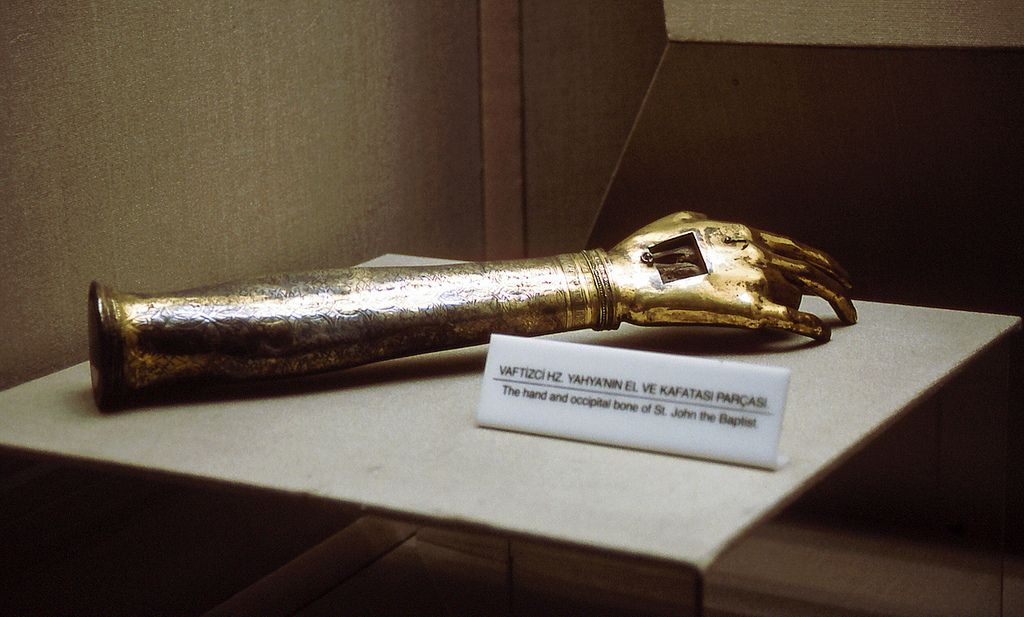
- The Kasikci (Spoonmaker’s) Diamond : The Spoonmaker’s diamond is 86 carats and one of the biggest in the world. But, it is still an unknown how this diamond was found, created and moved to the palace. The Kasikci (the Spoonmaker’s) Diamond has currently different stories in the public. Here you can find two of them. The first story is about Pigot’s diamond. A French officer Pigot purchased a diamond and brought it to France. After a while, Napoleon’s mother purchased it. When Napoleon was sent to exile, his mother sold it and one of Tepedelenli Ali Pasha’s men bought it. However, Ali Pasha was killed because of rebellion rumors against Ottomans and his treasure was confiscated and moved to the Ottoman treasury. But, this story’s connection is missing why the diamond was named as spoonmaker’s even both diamonds (Pigot’s and Kasikci) sizes’ are matching. The other tale is well accepted in the public. A poor man or a fisherman found this shiny stone in a garbage dump. This man exchanged this stone with three spoons with a spoon maker. And then, the spoon maker sold the stone to a jeweler for small money. Furthermore, the jeweler showed the stone to another jeweler and somehow, they understood that this piece was very valuable. But they had a conflict about how to share it and chief jeweler of the palace heard it and bought it from these jewelers. And then, grand vizier wanted to buy, but this time the Sultan heard the story and he wanted to transfer the stone to the palace’s treasury. After cutting the stone, 86 carats diamond was created and transferred to the treasury. What a great story into this sequence
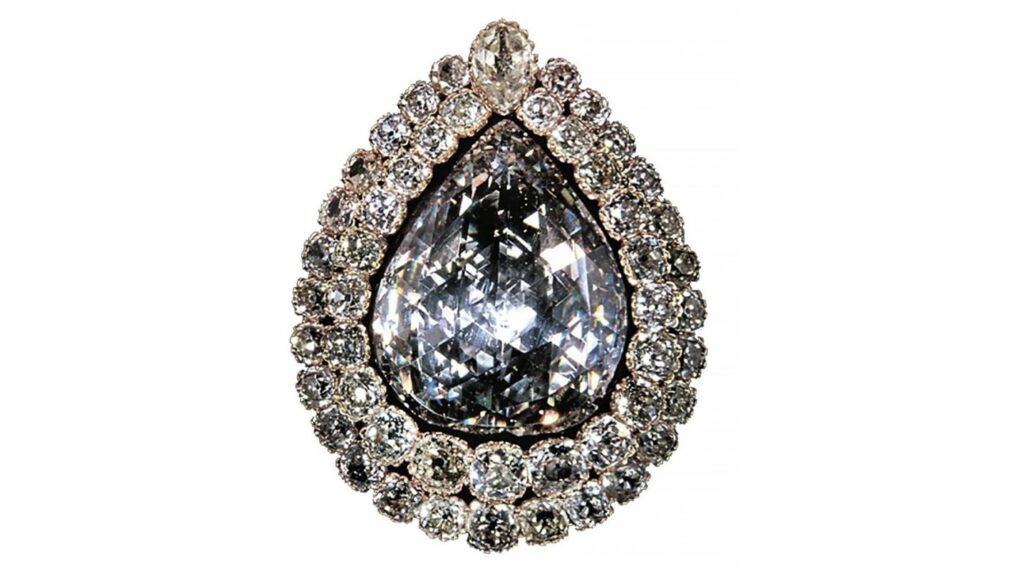
- Nadir Shah Throne : Nadir Shah also sent gifts and one of them is Peacock Throne. Iranian ambassadors learned the rebellion and Nadir Shah’s assassination as well and wanted asylum from the Ottoman government. Moreover, these treasures were also transferred to Istanbul. Thus, the Peacock Throne safely reached Istanbul and was moved to the Ottoman treasury.
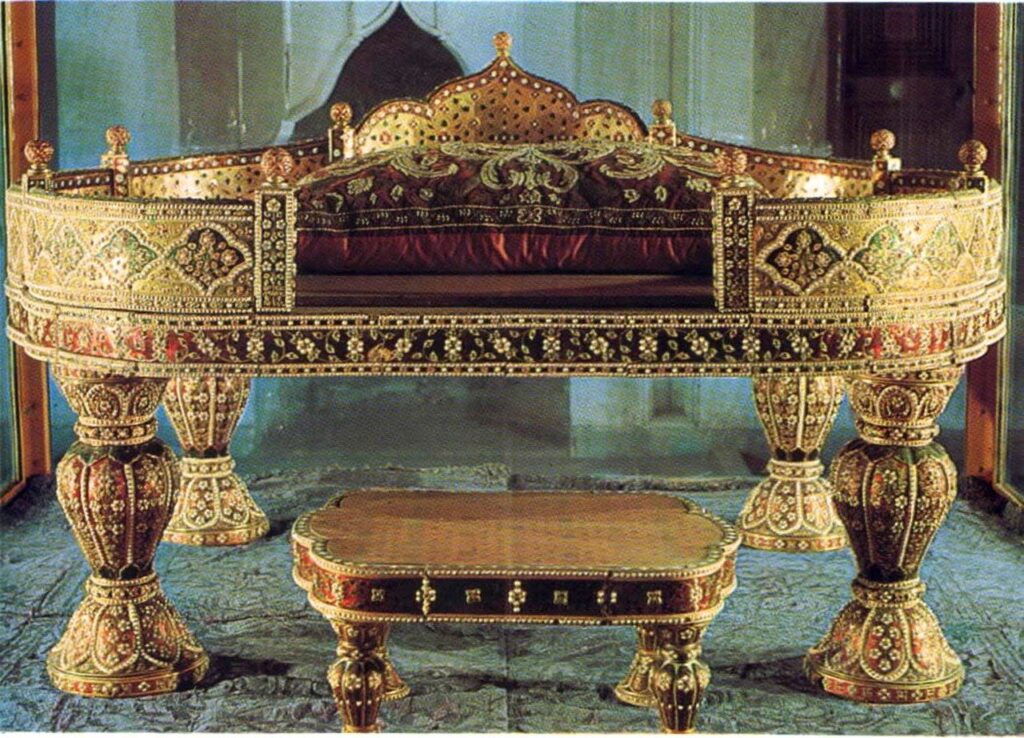
- The Emerald Dagger : The Emerald Dagger which is the subject in the movie “Topkapi” is shown in the Outer Treasury room. Basically, the Topkapi Dagger was supposed to be a gift to Nadir Shah. Sultan 1st Mahmud sent a delegation to Iran with this precious gift including three big emeralds. When the delegation crossed the Iranian border, they received a piece of news that Nadir Shah had been assassinated. After a lot of troubles, they were able to return the dagger and other gifts to the palace which were supposed to be delivered to Nadir Shah.
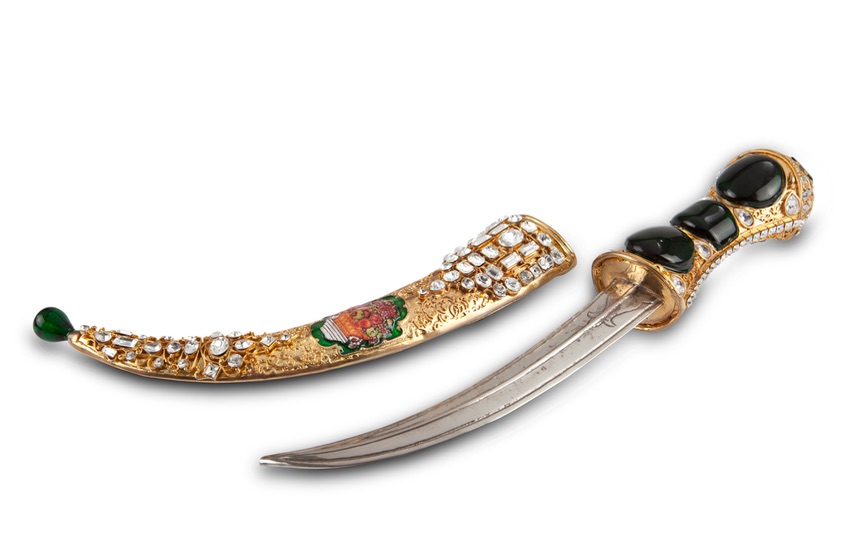
Religious Relics
The Pavilion of the Holy Mantle (Hasoda Koğuşu) contains several of Islam’s holiest relics. Exhibits include hairs from the Prophet’s beard, one of his teeth, two of his swords and the sacred standard used during his military campaigns. The most important relic of all is the Holy Mantle, a plain black camel-hair cloak that the Prophet gave as a present to a poet. Once a year, it was displayed to high officials then doused in water; the drops squeezed from it were sent out as talismans against the plague.
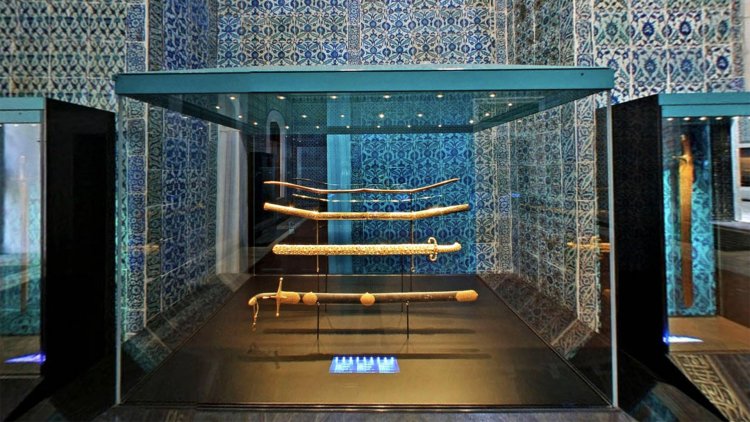
- Uthman Quran : Sacred relics room had a Quran which was investigated by different theologists. At some point, it was believed that the Quran had been written during the caliph Uthman (or Othman and Osman in the Turkish) period. The further investigations revealed that this Quran was one of the oldest and can also be the oldest as the nearly complete text of the Quran in the world. However, the same investigations show that this can’t be coming from the caliph Uthman period. It is also worth briefly explaining how the Quran had been distributed to Muslim provinces.Caliph Uthman was the third leader of Islam after caliphs Abu Bakr (Ebu Bekir in Turkish) and Umar (Omer in Turkish). Muslim territories started expanding and this basically means new people, new Muslims and new thoughts about the Quran. During the Caliph Uthman period, this became an important topic. According to some resources, Caliph Uthman had been requested by Muslim provinces to send the original copies to prevent the discussion about the interpretations. So, Caliph Uthman had ordered to write a couple of copies and distribute them to the Muslim provinces.
Harem

It was an ‘education center’ and a ‘service temple’. But in the end it was the residential quarters of the Sultan… People are always interested in the unknown, curious about what is hidden. This is valid as much for things in our proximity, as for mysteries hidden in the depths of history. We always want to know more, to see what is behind closed doors. And, the more blurry the dusty pages of history are, the greater are the speculations about them. One of the best examples of this is the Topkapı Palace Harem, also known as Darüssaade. This place being the Sultan’s private space; it was not allowed to reveal what was happening inside. However, the more things were kept secret; all the more stories were invented about it. Hence, it became the subject on which the greatest variety of rumor was being produced, in the past as in the present. But now, let us set aside fantasies and look at the facts of the harem… Read more about Ottoman Harem Article










